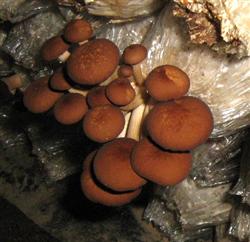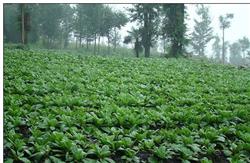What are the management points of Rehmannia glutinosa cultivation?

What are the management points of Rehmannia glutinosa cultivation? Please share the introduction of Rehmannia glutinosa planting management for reference: 1, cover grass: after planting and covering soil under Rehmannia glutinosa, cover the border with grass or other crops Artemisia stalk, which can inhibit the growth of weeds and keep the soil loose. 2. Interseedling: too many seedlings were removed when weeding in the middle ploughing for 30 days after emergence. The principle is to get rid of the bad and keep the good, leaving two seedlings in each place. 3. Topdressing: a large number of fleshy rhizomes began to form one month after the emergence of Rehmannia glutinosa, and the dry matter of the rhizome increased sharply after two months, and the line was closed for about two and a half months, so topdressing must be applied before the row was closed. In the whole growing period of Rehmannia glutinosa, topdressing 2Mel is needed for 3 times. The first 20 days after the full seedling, the second 20 days after the first follower fattening, and the third according to the growth strength of the seedling. Topdressing is based on nitrogen, with 20ml / mu of human and animal dung and urine or 3.5kg of urea per mu. 4. Weeding in middle tillage: the root distribution of Rehmannia glutinosa is relatively shallow, and the number of times of middle tillage should not be too much, and the yield is often reduced due to damage to the root system. During the whole growing period, only middle tillage (shallow ploughing) is needed. But there are weeds that need to be pulled out in time. 5. Drainage and irrigation: if drought occurs after sowing, it should be watered in time to improve the seedling emergence rate. 3 months after sowing, the rhizome forms rapidly, which needs more water, and it is also the period when the rhizome is easy to rot, so we should pay attention to reasonable irrigation and timely drainage at this time. 6. Picking flowers: if it is not for Rehmannia glutinosa, if it is found that the pregnant buds blossom, it should be removed in time to avoid wasting nutrients. Click to get more planting techniques of Rehmannia glutinosa
- Prev

How to cultivate and manage tea tree mushroom?
How to cultivate and manage tea tree mushroom? Please introduce Pleurotus ostreatus, also known as Pleurotus ostreatus, willow matsutake, willow ring fungus, etc., is one of the newly developed varieties of edible fungi in recent years. The fruiting body of Pleurotus ostreatus is delicious, crisp and delicious, rich in protein, and is the most popular edible fungus in Europe and Southeast Asia.
- Next

What are the management methods for planting Rehmannia glutinosa?
What are the management methods for planting Rehmannia glutinosa? Please guide the management methods of Rehmannia glutinosa planting management is divided into several types, reference as follows: first, field management 1, and time seedling replenishment. When the height of the seedling is 10-12 cm, the seedlings begin to grow, leaving 1 strong seedling in each hole. If there is a lack of plants, they should be replanted in time in cloudy days. When replanting, they should bring soil to raise seedlings.
Related
- Fuxing push coffee new agricultural production and marketing class: lack of small-scale processing plants
- Jujube rice field leisure farm deep ploughing Yilan for five years to create a space for organic food and play
- Nongyu Farm-A trial of organic papaya for brave women with advanced technology
- Four points for attention in the prevention and control of diseases and insect pests of edible fungi
- How to add nutrient solution to Edible Fungi
- Is there any good way to control edible fungus mites?
- Open Inoculation Technology of Edible Fungi
- Is there any clever way to use fertilizer for edible fungus in winter?
- What agents are used to kill the pathogens of edible fungi in the mushroom shed?
- Rapid drying of Edible Fungi

